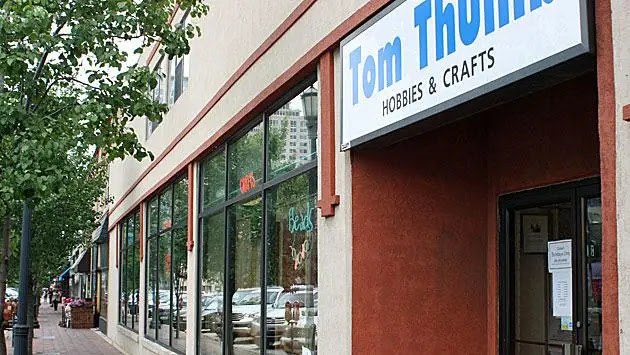"Gene & Georgetti, 500 North Franklin Street, Chicago, IL, in Chicago's River North neighborhood, was founded in 1941 by Gene Michelotti and his partner Alfredo Federighi, nicknamed "Georgetti" after a famous Italian cyclist. Located in the heart of River North, Gene & Georgetti is Chicago's oldest steakhouse and one of its finest. Little did they know, their humble restaurant would become a legendary hotspot, attracting A-list clientele and serving up some of the city's finest steaks.
Born in the small Tuscan town of Lucca, Italy, Gene Michelotti came to the United States at age 15; several years later, he married Ida Passaglia in April 1938. Though he spoke little to no English upon his arrival, he worked numerous jobs, including night watchman, porter, dishwasher, and bartender, where he encountered his future business partner Alfredo "Georgetti" Federighi, a chef.
Together, in 1941, they founded Gene and Georgetti. Alfredo had the kitchen, and Gene was the front man holding the bar. His genuine and vivacious personality made him a hit with regulars, politicians, and celebrities. Upon Alfredo's death in 1969, Gene became the sole proprietor of Gene & Georgetti until he died in 1989.
 |
| The Main Dining Room |
Gene's daughter Marion married Tony Durpetti in 1969. They have one daughter, Michelle. Upon the death of Gene in 1989, although a CEO of his own national radio advertising firm, Tony and Marion did not want to see the restaurant leave the family, so they decided to purchase it from Marion's mother, Ida Michelotti. Now in its 80 years, the legacy of both Gene & Georgetti is honored, protected, and celebrated within three generations of Gene's family, the most recent being his granddaughter, Michelle, and grandson-in-law, Collin. This new generation dedicates itself to maintaining the traditions that both Georgetti and Gene started, but also to honor Tony and Marion and the rich Italian history that the entire family is so proud of."
 |
| The Fireside Room |
Legends like Frank Sinatra, Bob Hope, and Lucille Ball, as well as modern-day celebrities like Russell Crowe, Keanu Reeves, Vince Vaughn, and Will Ferrell, along with international, national, and local politicians, have helped make Gene & Georgetti a classic old-time Chicago place to dine. The restaurant proudly boasts a legion of regular customers, some going back more than 50 years.
Together with their daughter, Michelle Durpetti, and son-in-law, Collin Pierson, Tony, and Marion Durpetti, they proudly maintain the tradition of quality and service that has defined Gene and Georgetti for eight decades.
 |
| 48 Oz, Prime Dry Aged, T-Bone ─ $155.00 |
sidebar
The T-bone steak is a cut of beef that includes two steaks in one: the sirloin and the tenderloin. The T-bone comes from the T-shaped bone separating the two steaks.
Here are the two cuts of meat you'll find on either side of the T-bone:
Sirloin (long, narrow side): This side is cut from the rear section of the animal, near the hip. Sirloin steak is known for its rich flavor and firm texture.
Tenderloin (short, wide side): This side is cut from the short loin section near the spine. Tenderloin steak is renowned for its buttery texture and mild flavor.
The aroma of sizzling meat and freshly baked bread wafted through the air as the doors opened, enticing passersby. Gene & Georgetti's menu boasted premium steaks, dry-aged to perfection, alongside traditional Italian-American dishes like pasta, seafood, and chicken parmesan. The restaurant's cozy ambiance, dark wood, white tablecloths, and vintage photographs made it an instant favorite among locals and businessmen.
Word spread quickly, and soon, Gene & Georgetti became the go-to spot for Chicago's elite. Politicians, mobsters, and Hollywood stars flocked to the restaurant, eager to savor its exceptional cuisine and rub shoulders with the city's powerbrokers. Frank Sinatra, Dean Martin, and Sammy Davis Jr. were regulars, often enjoying private rooms and personalized service.
One fateful evening, Ol' Blue Eyes, Frank Sinatra, strolled into Gene & Georgetti, entourage in tow. He requested the "Round Table," a coveted spot reserved for the restaurant's most esteemed patrons. The room excitedly filled as he sipped his signature martini and devoured a mouthwatering filet mignon. The Rat Pack was in the house, and Gene & Georgetti was the place to be.
 |
The Mural Dining Room |
As the years passed, Gene & Georgetti continued to thrive, its reputation as a steakhouse of stars spreading far and wide. The restaurant weathered the ups and downs of the city's culinary scene, adapting to changing tastes while remaining true to its roots.
In 1999, Gene & Georgetti was designated a Chicago landmark, solidifying its place in the city's history. Today, the restaurant remains a beloved institution, still serving top-quality steaks and Italian-American cuisine to a new generation of foodies and celebrities.
As you step through the doors, the same warm ambiance and exceptional service envelop you, transporting you back to an era of glamour and sophistication. Gene & Georgetti's legacy is a testament to the power of good food, fine wine, and the enduring allure of old-school Chicago charm.
Gene & Georgetti
Edited by Dr. Neil Gale, Ph.D.































